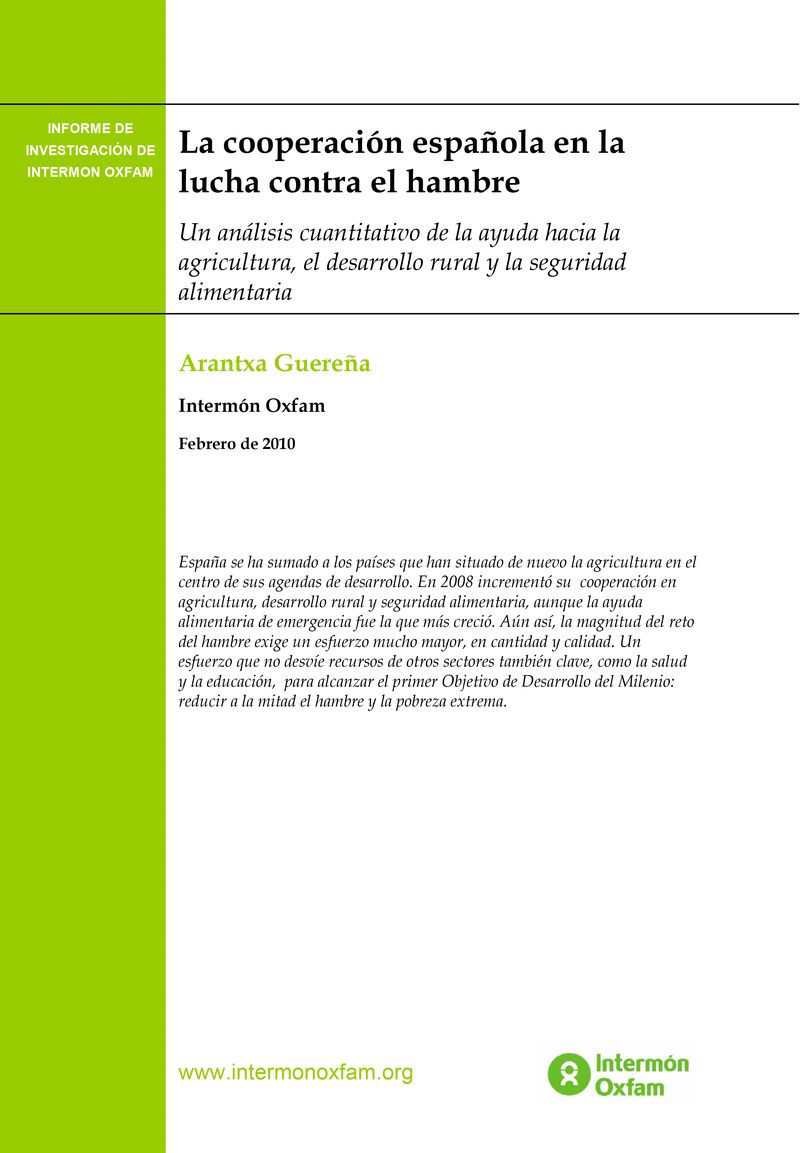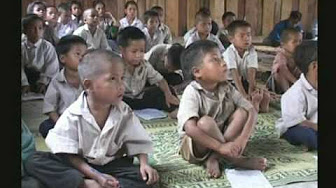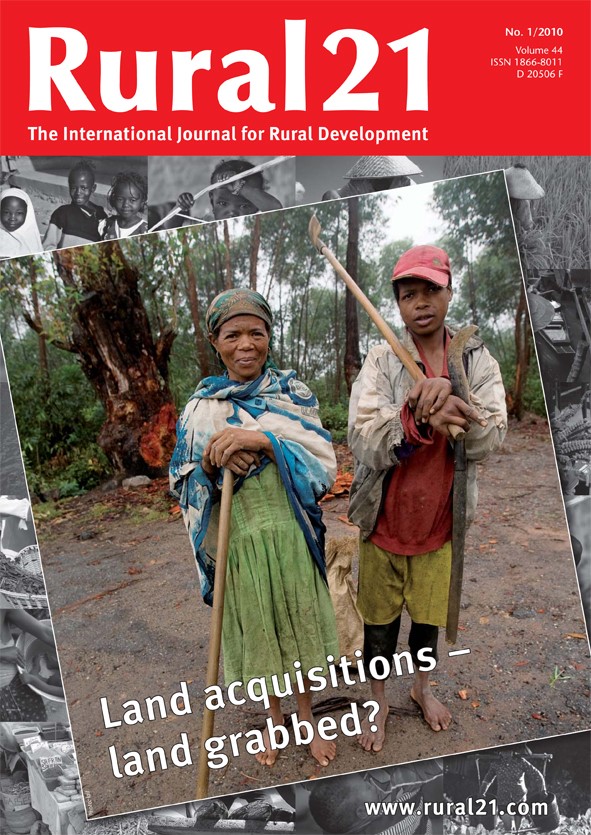La cooperación española en la lucha contra el hambre.
España se ha sumado a los países que han situado de nuevo la agricultura en el centro de sus agendas de desarrollo. En 2008 incrementó su cooperación en agricultura, desarrollo rural y seguridad alimentaria, aunque la ayuda alimentaria de emergencia fue la que más creció. Aún así, la magnitud del reto del hambre exige un esfuerzo mucho mayor, en cantidad y calidad. Un esfuerzo que no desvíe recursos de otros sectores también clave, como la salud y la educación, para alcanzar el primer Objetivo de Desarrollo del Milenio: reducir a la mitad el hambre y la pobreza extrema.





